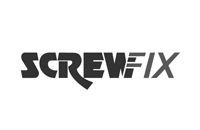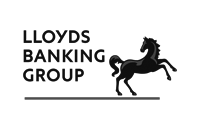Spamfink
De-spam, Risk-manage and stay in Google's good books
This is for you if:
- You’ve become anxious that Google thinks the links to your website could be spammy
- You recognise spammy links as a risk factor for your website and want to manage it
- Your website has disappeared from relevant search engine results
- Google has informed you that a penalty has been applied
- You're worried that SEO agency you hired once may have played fast and loose with your reputation
We will:
- Get you a proper view of what your links look like
- Help you manage the risk of spammy links going forward
- Help you get any penalty applied by Google lifted
- Make sure it doesn't happen again
- Teach you the basics of how to spot SEO snake oil and its peddlers so you don’t buy from such people again
Call us on +44 (0)330 223 1164
Email us at info@taxonomics.co.uk
The problem

Google has got this funny notion that only websites that have actually earned their reputation by being useful and relevant should score the top spots in search results. (And we quite agree.) Google therefore obliterates from its results pages those websites that it reckons have bought links or used any other underhanded tactics to try and land the number one positions (with some exceptions; i.e. if you are a mega brand, but that’s a whole other story).
And, in recent times, Google’s appetite for such obliteration, has been voracious.
As a result, many sites are experiencing upsets due to Google’s penalties, which lead to big drops in organic search visits for those sites, as they frequently and spontaneously vanish from previously relevant search engine results.
So, you are here because this has:
- already happened to you, or
- you have the fear of [insert your higher power here] that it is about to, because you are not sure you can trust your SEO agency, after all, or
- you have a message from Google you don’t quite understand (but have had no discernable impact on visits yet), or
- you are just a sensible business manager who prefers not to be caught by surprise and likes to manage risk appropriately.
How we can help
To get in Google's good books, you need to prove that you're a respectable webmaster who's willing to take responsibility for your actions. Demonstrating this can remove any penalties Google's placed on your website and also prevent you ending up in that situation in the first place. This is how we do it:
Analyse the links pointed at your website
Before we can go on our spam removal mission, we need to do a bit of recon. We go and look at the thousands of links coming into your site, and decide whether they're good guys or bad guys. Good guys are the nice, natural links coming from quality content that happened all by themselves, on the whole. Bad guys are spam links, paid-for links, unnatural links, broken and disappeared links. We then work our algorithm magic and see what falls out: bad domains, bad addresses, bad neighbourhoods? Everything is visualised in one of our beautiful spamflowers, which make it easy to figure out what's what. Once we've got that info, we can take action.
Ask site owners to remove spam links
First up, we need to try to get any spam links directed at your site removed altogether. This means getting in touch with the owners of any websites that are sending spam links your way. Actually getting hold of the site owners can be tricky, but needs must. Email, phone and social media profiles are the way forward here—but if there's still no response after harassing said website owners for an appropriate amount of time, there are other things we can do. We’d normally prefer you to undertake this part, if you have the resource to do so, but we can arrange do it on your behalf if necessary.
Disavow remaining links
If we have no luck getting hold of those pesky website owners, or they refuse to remove the links, it's time to pull out the big guns—commonly known as the Disavow Links tool. Disavow Links is part of Google's Webmaster Tools artillery. Put simply, it allows us to tell Google which links pointed at your site are spamtastic, and are not the nice and genuine ones that would probably offer you biscuits if you popped round for tea.
At this point we hope Google believes us and chooses to ignore the spam links when it decides where to place your site in search results.
You may be wondering why this isn't step one—wouldn't it be easier to just disavow all spam links without going to the bother of contacting website owners? But we need to prove to Google that you're a good, upstanding web citizen, remember? It's a trust thing. You need to demonstrate your willingness to ensure no more spam links are directed at your site.
Ask Google nicely
If your site has already been penalised (i.e. you're not simply taking preventative measures, which we also thoroughly recommend), the next step is pleading with Google to let you back into search results. It's very important to carry out the steps listed above before doing this, because otherwise Google is just going to give you the side-eye and say, “What's in it for me, Punk?”
But if you've been good and done the whole “harass (nicely, but persistently) website owners, disavow links” thing, you can submit a reconsideration request to Google. And Google will then nod sagely, restore your website to its former glory—eventually—and make you promise never to do it again. As Google withholds is precise definition of spam, it is possible that this cycle will need to be repeated more than once before it is successful.
What happens next?
If Google's happy with your spam link removal efforts, it'll revoke your penalty almost immediately, and customers will once again stroll happily onto your website after finding it effortlessly in their quest for whatever it is you sell.
We'll solve it (we're good like that)
The team behind Google are a pretty clever bunch (in case you hadn't heard), and they're constantly developing new techniques and algorithms to make sure the search results it offers to its users are the best. That means you can be stung by Google penalties even if you've only dabbled in link buying or spam content strategies.
Whether you've already been hit with a penalty or are just concerned because you once bought a dodgy service from a back-alley SEO dealer, we can help. We offer Penalty Removal services, as well as ongoing Risk Management services that stop you from being penalised in the first place.
Contact us
Ready to clean up that spam?
Call us on +44 (0)330 223 1164
Email us at info@taxonomics.co.uk





